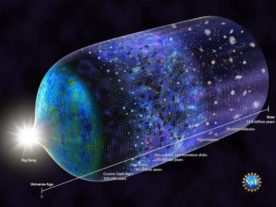Scientists, who studied a “hot Jupiter-like” exoplanet with NASA’s Hubble and Spitzer space telescopes, were able to detect signs of water in its atmosphere.
And, they didn’t just find signs of a little water – but a lot of water, three times the amount of water on our solar system’s largest planet, Jupiter.
The exoplanet they studied is known as WASP-39b, located about 700 lightyears from Earth in the constellation Virgo.
Scientists describe the planet as being hot and bloated with a mass similar to Jupiter.
The detected atmospheric water of WASP-39b is said to be in vapor form.
Although the exoplanet is now eight times closer to its host star than Mercury is to the sun, the researchers say because of the amount of water detected, WASP-39b probably first developed far away from its star, where it was blasted by a great deal of icy material.
























Comments are closed.